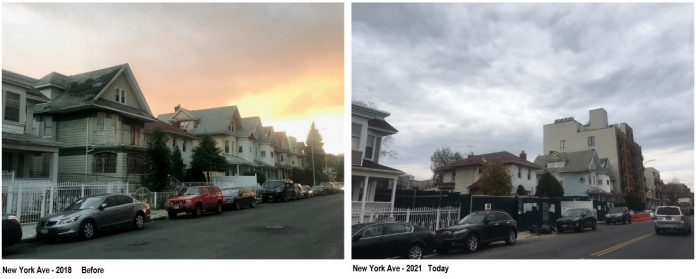by Lou Cespedes –
March 15th was the last day to file for any challenges to the NYC Department of Finance (NYCDOF) regarding the amount of property tax you are paying as a homeowner. Every year you receive what is called an “NOPV” (Notice of Property Value). In that document you will find many details about your property, among them your “Tax Class” determined by your building use, your building category, the market value of your building, the assessed value, and the tax rate applied to your particular property. Most people look at this NOPV in passing, glancing with resignation, at a field of big numbers. Since it’s not a bill, most folks often disregard this notice altogether, especially if you have a mortgage.
If you’ve paid off your home, you pay property tax either quarterly or every year. Most homeowners pay their property tax through their mortgages and may not notice how sharply the taxes have increased in our community for Class 1 homes, (1-3 Family homes). The property tax in East Flatbush, particularly near major transit arteries or consolidating neighborhoods has increased 20 percent over the last 5 years, (the maximum allowed by NYCDOF). This means most homeowners are paying upward of $7000.00/year of property tax on their homes, regardless of their condition. As I discovered, the way NYCDOF qualifies the “assessed” value of your home is incredibly opaque. There is a “formula” somewhere, but no one has ever seen it. It is based on “comps” (real estate parlance for comparable properties) for similar houses that have been sold in your neighborhood. This highly questionable methodology is rooted in the impossibility of meeting the “burden of proof” that most homeowners must provide if they want to challenge the “assessed value” of their home and the amount of property tax they pay. Incredibly, NYCDOF tells you how to challenge, but getting a reduction is near impossible unless you are retired or a veteran on the STAR program.
As I was performing due diligence for a client, I noticed something incredible. I researched a similar home to my own in Crown Heights. The market value of the home was over 25 percent higher than mine, but the “assessed” value was half, resulting in a far lower tax bill. How could this be? How could a home similar to my own, in a much more serviced neighborhood, with higher market value be assessed lower than my own home? This led me to question NYCDOF’s methodology and left me beginning to wonder if something else was going on.
Many refer to the property tax in our community as a “regressive tax”. A regressive tax is a tax applied uniformly, taking a larger percentage of income from low-income earners than from high-income earners. It also means, in our particular context, that because the “value” of our homes are “assessed” higher in our community than Crown Heights, based on the proportion of your “income” you are taxed a lot more! In other words, we are taxed more because we are poorer and because our homes are “valued” at more than we can afford. You are “house rich, cash poor”. Think this over for a minute.
Now consider this; Do you really believe your physical property is less expensive than a property in Crown Heights by any measurable standard? No! So, what is different? The difference is ZONING! Simply put, the value of the land under your house cost more than the house sitting on it. The regressive tax applied to our property is purposefully designed to drain our community of wealth, make our households insolvent, and forces us to sell our homes, therefore making the land of distressed homeowners cheap for developers to buy.
This is known as REDLINING! Flatbush is being redlined to create a gateway for Re-Zoning. By weakening the financial footing of current homeowners, and making distressed properties cheaper to purchase, the City of New York is facilitating an “up zoning” – or increase the allowable height and size of buildings on lots currently zoned R6 – by using MIH (Mandatory Inclusionary Housing) zoning standards and thus creating more housing stock. The problem is that once those new buildings are completed, they are exempt from property tax for 15-25 years under New York State’s 421-a tax abatement. This explains why the increase in our property tax is “maxed out” and will continue along this trend for the foreseeable future. Five years from now we will be paying close to $9000.00/year in property tax, unsustainable for most families in our community making less than 60k/year. Covid has only accelerated this catastrophe. Look around your neighborhood. Do you see a new building? If you do, the timebomb has been set. You are paying their property tax, and you are being robbed!
In the coming weeks, in my new series on homeownership, we will explore ideas on what we can do to defend ourselves, and what to look out for as we navigate the post-Covid realities of gentrification in our community.
Jeremiah 9 v.18-20
Twitter: @louforflatbush





















































 and then
and then